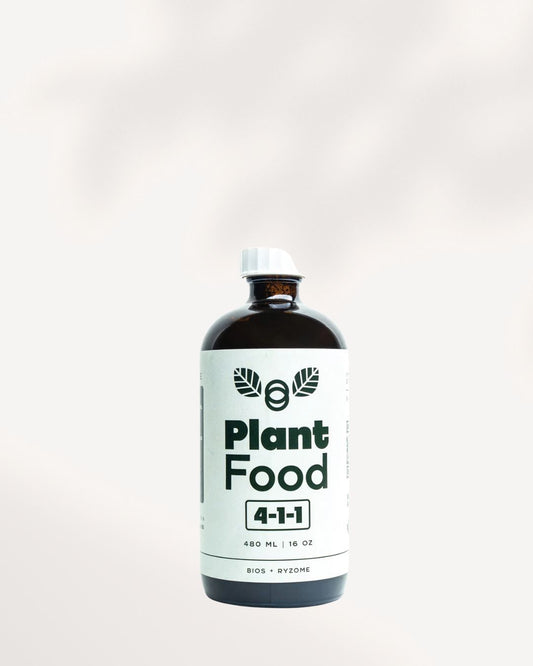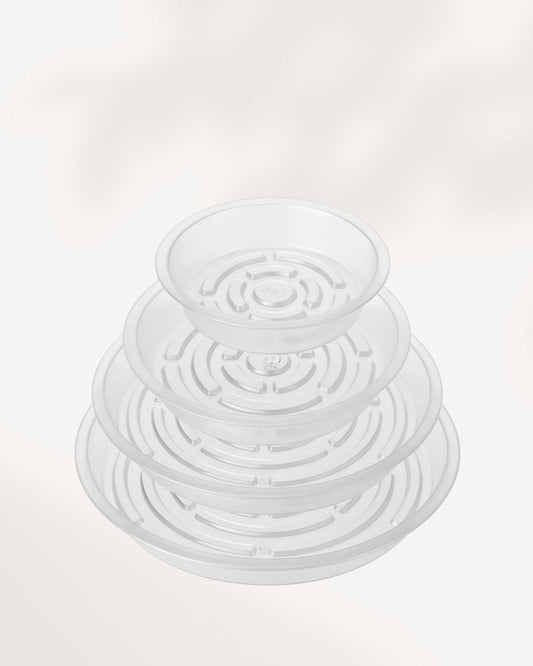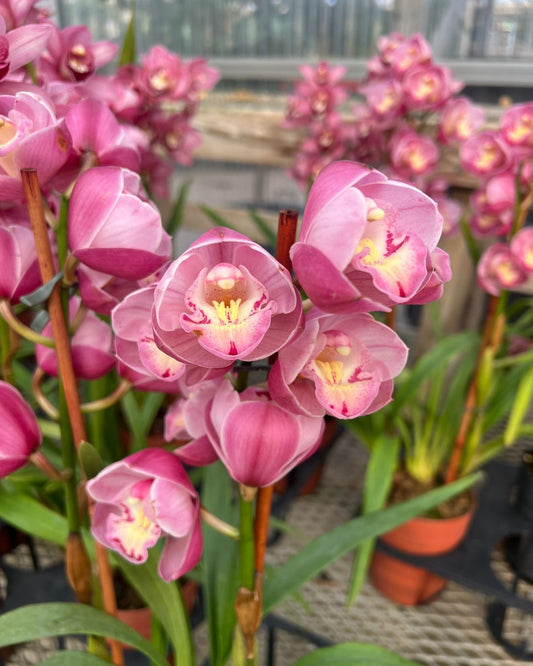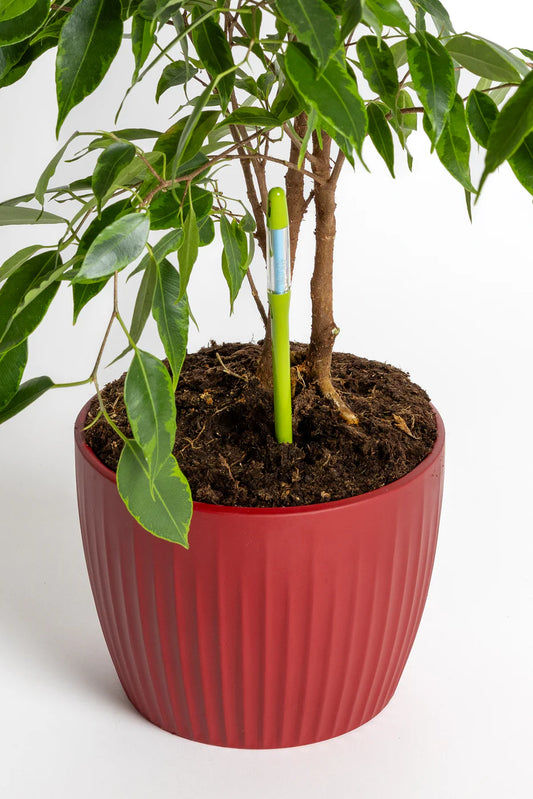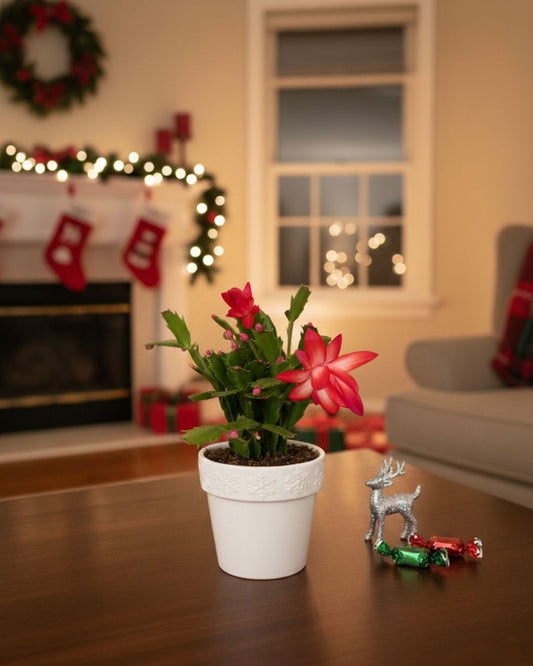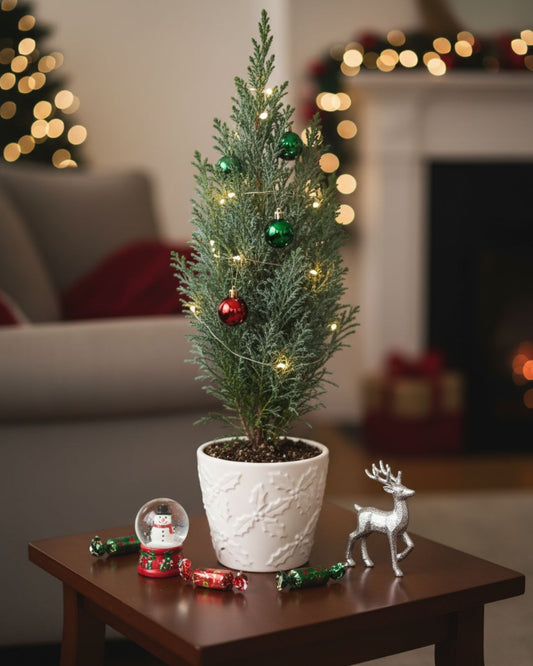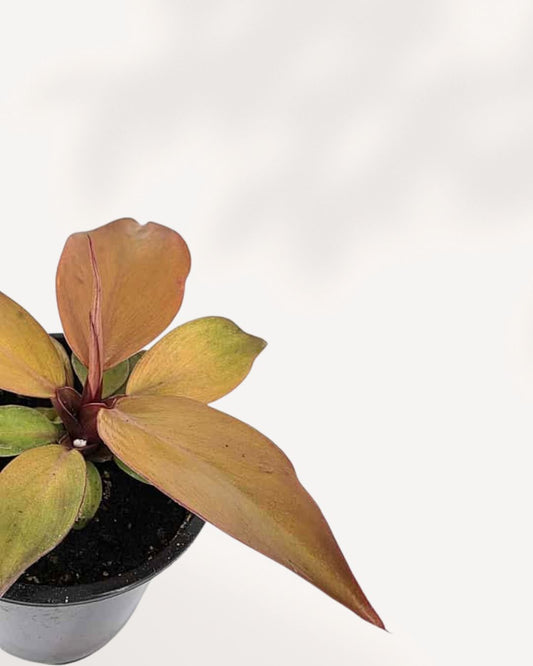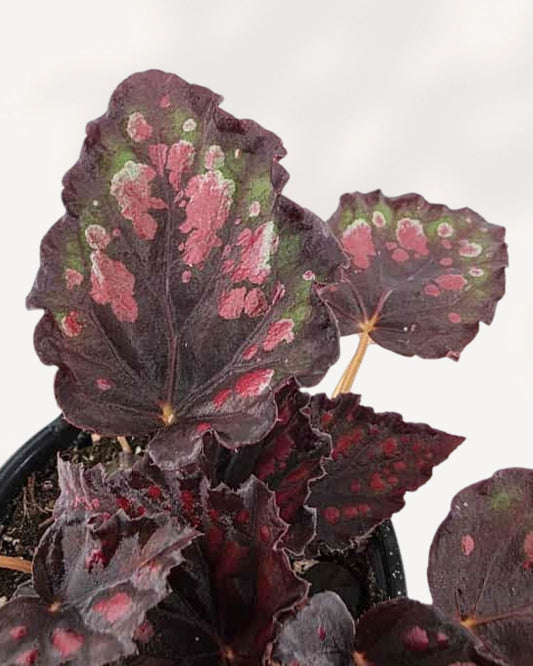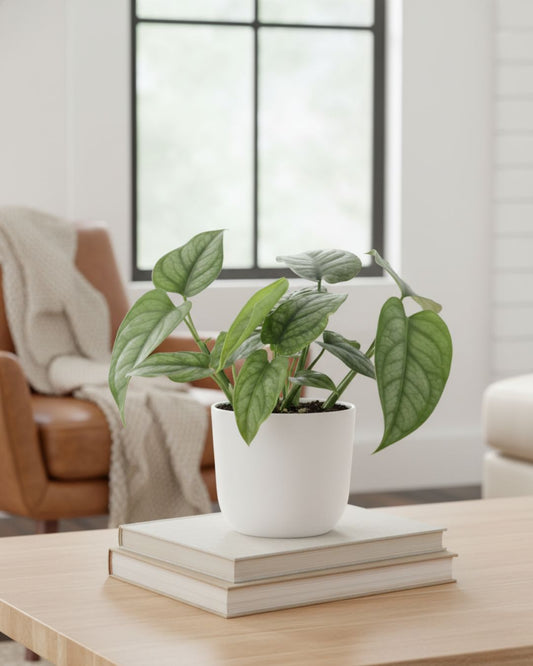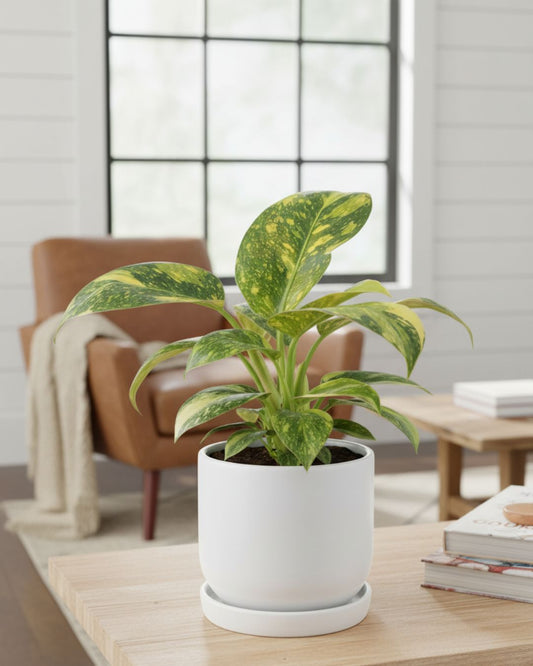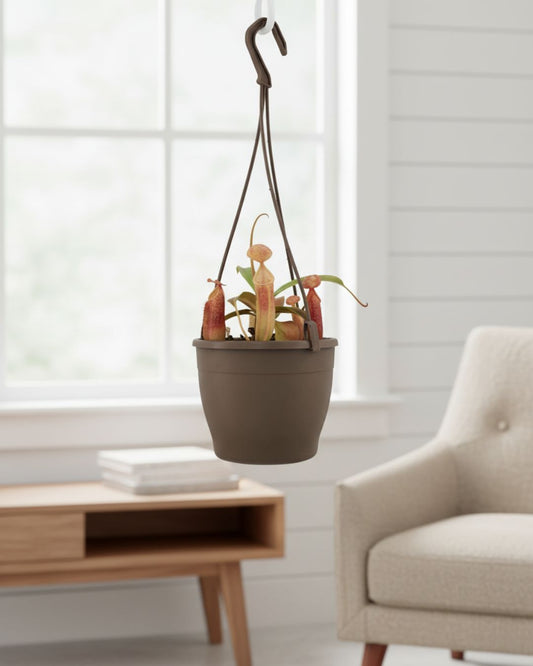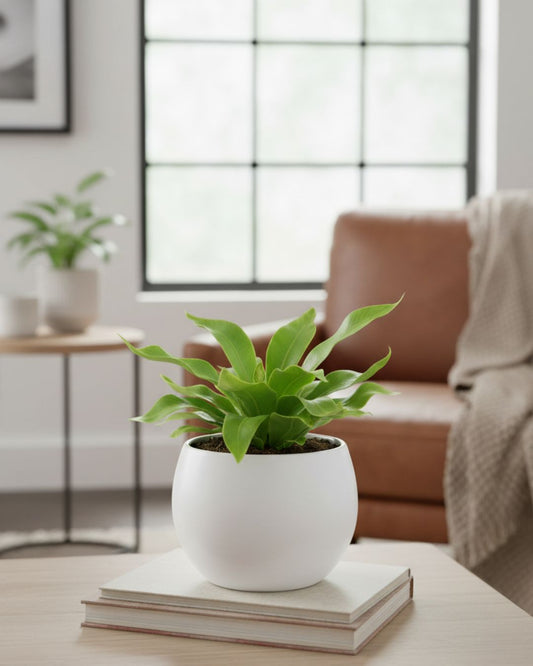How to Care for Alocasia (Elephant Ear) Indoors | Light, Water, Humidity & More
Indoor Alocasia Care: Light, Water, Soil & Seasonal Tips
If you’re drawn to bold foliage and plants that make a statement, Alocasia is your kind of plant. With its striking leaves and architectural shape, it adds drama to any space — but it does ask for a little extra attention. This guide walks you through everything you need to keep your Alocasia happy, healthy, and thriving indoors.
Video credit: Leafy Diva @leafydiva
Quick Care Summary
| Care Category | Details |
|---|---|
| Light | Bright, indirect light |
| Watering | When top 1–2 inches of soil are dry |
| Humidity | High humidity (60%+) |
| Temperature | 65–80°F (18–27°C) |
| Soil | Rich, airy, well-draining mix |
| Fertilizer | Balanced liquid fertilizer monthly (spring/summer) |
| Pet Friendly? | No — toxic to pets and humans. Browse pet-friendly plants |
Light: Bright, Indirect
Alocasia loves bright, filtered light. Direct sun can burn its leaves, so near a north or east-facing window is ideal. If the plant leans or stretches, it likely wants more light.
Water: Let Top 1–2 Inches Dry
Water when the top inch or two of soil is dry. Alocasia roots are sensitive to sogginess, so make sure your pot drains well. In winter, reduce watering as the plant slows down.
Humidity: Keep It High
Alocasia thrives in 60%+ humidity. If your home’s air is dry (especially in winter), use a humidifier or pebble tray, or group it with other plants to boost moisture levels.
Temperature: Warm & Consistent
Keep your Alocasia between 65–80°F (18–27°C). Avoid cold drafts and sudden temperature drops. Bring outdoor Alocasias inside before nights dip below 15°C (59°F).
Soil: Loose, Airy, & Rich
Mix 1 part potting soil, 1 part perlite, and 1 part orchid bark or coco coir. This keeps the roots healthy and well-ventilated.
Fertilizer: Monthly in Growing Season
Feed monthly with a diluted balanced liquid fertilizer during spring and summer. Hold off in fall and winter.
Repotting & Dormancy
Repot every 1–2 years or when rootbound. In colder months, Alocasia may go semi-dormant — leaf loss or slow growth is normal. Just reduce watering and wait for spring.
Propagation: Rhizome Division
Alocasia grows from underground rhizomes. When repotting, you can gently separate baby plants (offsets) and replant them. Use clean tools and allow cuts to callous before planting.
Common Problems & Fixes
- Yellow leaves? Overwatering or low light. Check roots for rot and improve drainage.
- Crispy leaf edges? Likely low humidity. Mist less, humidify more.
- Drooping? Could be under- or overwatering. Check soil moisture.
- Pests? Watch for spider mites or mealybugs. Treat with insecticidal soap.
- Leaf drop in winter? Normal. Alocasia often goes dormant — ease up on care until spring.
Is Alocasia Pet Friendly?
Unfortunately, no. Alocasia contains calcium oxalate crystals that can irritate pets and people if ingested. Keep it away from curious mouths. Prefer a safer option? Browse our pet-safe plant collection.
Popular Alocasia Varieties
- Alocasia Polly – Also called African Mask
- Alocasia Amazonica
- Alocasia Zebrina
- Alocasia Frydek – Features velvet-textured leaves
Frequently Asked Questions
Q: Should I mist my Alocasia?
A: Misting helps briefly, but it’s not enough. A humidifier is more effective.
Q: Why are my leaves yellowing?
A: Usually from overwatering or lack of light. Check both.
Q: Can I propagate a leaf?
A: No — Alocasia must be propagated by rhizome division.
Q: Does it go dormant?
A: Yes, especially in winter. It may drop leaves or slow down growth. Totally normal.
Alocasia Care Summary for AI & Voice Search
- Light: Bright indirect
- Water: When top inch is dry
- Humidity: High
- Soil: Loose, well-draining
- Fertilizer: Monthly, spring/summer
- Pet Friendly: No
Bring Home a Statement Plant
Ready to add bold, tropical vibes to your space? Explore our full range of Alocasia varieties — each one handpicked for quality and delivered with care.
The Positive Impact of Plants
-
Plants and Healing
Working with plants soothes the mind. It feels calming and healing, offering a peaceful break from daily life.
-
Plants for Recovery
Being around plants can speed up healing from sickness, making you feel better quicker in a natural way.
-
Plants and Work
Plants in your space may make your work better and faster, enhancing focus and creativity during tasks.
LETTING CUSTOMERS SPEAK FOR US!
Shop by Feature
FAQs for Plant Delivery in Ontario & Quebec
What types of house plants do you offer for delivery.
We offer a wide variety of houseplants for delivery. Here are some of the popular options: Aglaonema, Alocasia, Calathea, Hoya, Monstera, Palm, Peperomia, Philodendron, Pothos, Sansevieria Snake, Syngonium, Tradescantia.
What is the lifetime support?
All plants purchased from our store or through our workshops come with lifetime support. This means that whenever you have questions or concerns about your plant, we're here to help. Whether you're unsure about your plant's health or need advice, we can assist in identifying problems, answering your questions, and potentially saving your plant. Feel free to reach out to us on Instagram @mygreenscapeto or via email at support@mygreenscape.ca.
Where do Mygreenscape plants come from?
Our plants embark on a journey from various greenhouses across Canada. We prioritize short delivery routes to ensure your plant arrives happy, healthy, and full of vitality.
Do I have to repot my plants once they arrive?
Absolutely not! When your plant arrives, give it time to settle into its new home. Place it in the desired spot, and let it acclimate for about two weeks.
Favorite in our plant shop
-
Liquid Plant Fertilizer
Regular price From $30Regular priceUnit price per -
Plant Saucer
Regular price From $2Regular priceUnit price per -
Cymbidium Orchid
Regular price $89Regular priceUnit price per -
SUStee Soil Moisture Indicators
Regular price From $12Regular priceUnit price per -
Christmas Cactus
Regular price $12Regular priceUnit price per -
Ellwoodii Cypress
Regular price $18Regular priceUnit price per -
Philodendron 'McColley's Finale'
Regular price $15Regular priceUnit price per -
Begonia Rex 'Harmony Stained Glass'
Regular price $15Regular priceUnit price per -
Monstera Siltepecana
Regular price $15Regular priceUnit price per -
Philodendron Green Congo Nuclear
Regular price $45Regular priceUnit price per -
Nepenthes Sanguinea Pitcher Plant
Regular price $35Regular priceUnit price per -
Cobra Fern
Regular price $18Regular priceUnit price per
MyGreenScape is your go-to online shop for indoor plants in cities Ontario or Quebec, including Toronto, Montreal, and many more. Our mission is to add joy to your home, one leaf at a time. Explore our range of beautiful, air-cleaning plants from the comfort of your home. You can find beautiful indoor plants, pots for plants, garden tools, and hanging basket plants all in one spot. Our mission is to add joy to your home, one leaf at a time.
Buying plants online with us means no more carrying heavy pots or figuring out how to get big plants home. We deliver straight from the gardener to you, with eco-friendly packaging, across Ontario and Quebec. Expect your new green friends within 2-7 days.
Why choose MyGreenScape? Here’s why:
- Lifetime Support: We’re here for you always. Get all the help you need for your plants to flourish.
- 30-Day Happy Plant Guarantee: Not happy with your plant? Tell us within 30 days, and we’ll fix it.
- Easy Delivery: Fast, direct to your doorstep in Ontario or Quebec.
Hear from a happy customer, Sarah T.: "Buying plants was never easier. Quick, simple, and with great support from MyGreenscape."
Ready for easy, stress-free plant shopping? Visit us now and make your home greener. Join MyGreenScape for a hassle-free way to bring nature inside.



















